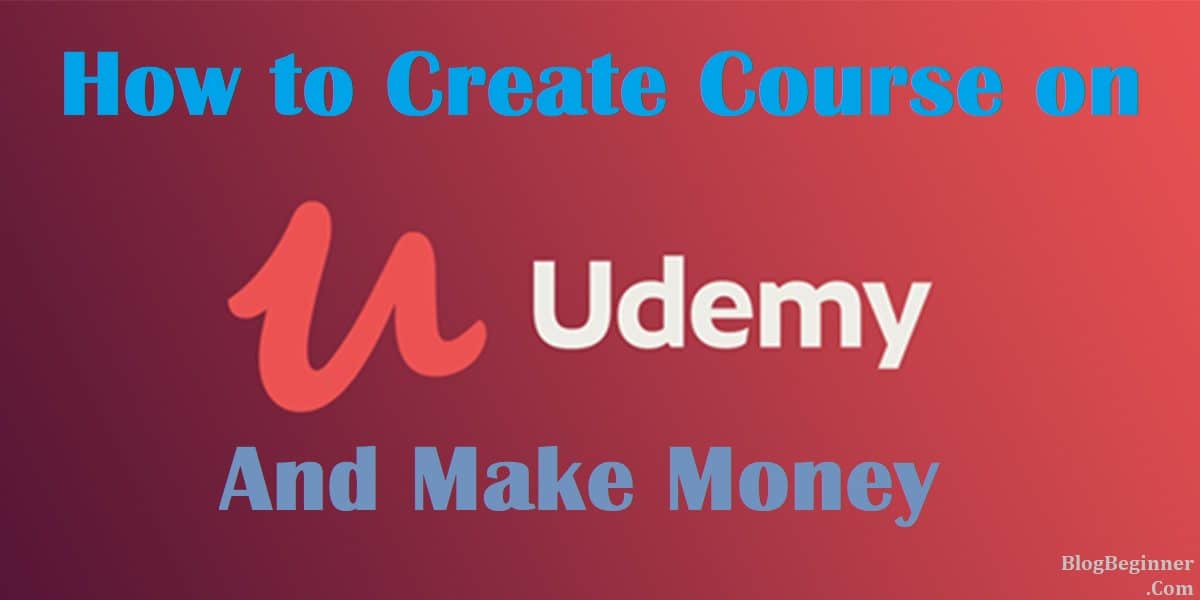Today might feel like just another day on the grind, but it could be the day that makes the best days of the rest of your life.
Why?
Well, if you’ve been scouring the internet for information on how to make money online, and have an inherent passion for teaching, this could be it.
If you have something you’d like to share with the world, a passion, professional skill or talent others could benefit from, launching an online course could be it for you.
You might finally earn a living online by creating a successful and highly profitable course on Udemy.
Udemy is an online learning platform dedicated to improving lives through learning. It’s a top marketplace for students and instructors with a global reach.
Udemy has over 30 million students you could reach, and it offers more than one hundred thousand courses.
By creating a course on the platform, you will be one of the 42,000 instructors. With the high number of students and the fact that the number is always rising, it means that you could easily make a living as an instructor.
Unfortunately, not everyone offering an online course on Udemy is earning from the endeavor hence this article. This article endeavors to help you create the most profitable/ successful course on Udemy.
First, you should hunger to be greater, have the willingness to be successful, and you must have the capacity to implement new thought processes in the lives of your students.
Also, you need to work on only creating a profitable course.
How do you do it?
Contents In Page
Decide what you’ll teach
Contrary to popular belief, the course you offer is a product, not the business. And for your business to be profitable, the product chosen should be not only perfect in offering value to your leads and buyers, but it should also generate a good amount in revenue.
In this case, you should be clear about the topic you wish to be known for or rather, the course you are an expert in.
Your life and professional experiences and achievements are a great place for you to start, but they are not everything. Explore other aspects of your life such as your interests/passion, and skills.
You could map these elements in the form of a table to narrow down the list of things you could teach. You should identify about 2 or 3 topics where your skills, passions/ interests, and experiences/ achievements intersect.
If this doesn’t work out too well, then try the other option: ask yourself if you have something to teach. You could also ask your inner circle of friends and family for ideas on what you are great at – although, if you are really good at it, you won’t have to ask.
Lastly, you could choose your subjects as either an expert on the subject or as a curious novice willing to learn while teaching others.
The key to being an expert is through learning because learning helps you document the whole process.
Identify your target audience
Your course will be profitable only if you have interested students to pay for the course.
Having identified the course/ topic you’d like to teach, narrow down your list of people who’d be interested in learning the subject and its intricacies.
Your target audience is your target market – you should never assume that the topic you are passionate about will appeal to everyone on the internet.
And, going in while assuming that your topic would be appealing to everyone could easily mean creating a course package that appeals to no one.
Confusing, huh?
How about this: your ideal course idea should be the combination of your passion, skill, experience, and the target audience.
After you identify your course idea, look for the person (s) whose needs would be best met with the idea.
Does a true demand exist?
After identifying your course idea and the target audience, next comes the tough bit: validating the market demand for your product. Your course is as profitable as its level of demand.
Since you don’t want to spend months creating a course with low demand, research your competition and ask your target audience what they’d like to learn.
Your competition is your proof of demand in the market. You could easily identify whether or not demand for a subject exists by using the Google Keyword Planner as your research tool.
Topics with high demand will record an equally high search volume. Often, topics with no competition will mean few or none buyers, so, opting for the competitive topics is a smart move.
Option two involves asking for direct feedback from your target audience. You could use your mailing list, social media followers, or your existing/ previous clients. The feedback received could also help you gauge your prices.
For the identification of a profitable topic, you should take stock of the things people are asking of you, identify your audience’s pain points, and also the things your existing clients struggle with, the most.
Brand Positioning
Every successful entrepreneur will tell you that their success is the result of a strong brand presence.
Once you settle on the topic to teach, think of ways of positioning yourself as a trusted authority for a specific topic. Brand positioning ensures that people find you whenever they search for the kind of information you provide.
You also need to identify your brand’s Unique Value Positioning. You could do this easily by asking questions like whether you’d help or not, what you’d help with, and why that thing is beneficial to them.
Build an Audience
You need an audience that not only likes but also knows and trusts you. Building that audience also requires that you build a relationship with your audience to enhance loyalty and boost engagement rates.
Social media, publicity/ PR, content marketing, email marketing, networking, and paid advertising are some of the paths to building a reliable audience.
Start with a Free, Mini Email Course
Before you get in too deep, create a simple mini-course then send it to your email subscribers. Here, you do not need to set up a website or the use of sophisticated software.
The feedback from the mini-course will tell you whether or not your idea is profitable, and you could use it as a mailing list for the paid course.
You could also presell your course by asking interested students to Apply to Buy or use a Coming Soon to explain what the course will be all about.
Only when sure about getting buyers that you should continue to create the course.
Create Your Course
Now that you have the market bit figured out, it’s time to get down to creating your course.
- Select the course title/subtitle, course outline, lesson type, then create your ideal lesson content. Don’t forget to edit the lesson’s content.
- Create the course’s website
- Select the price for the course
- Come up with assignments, quizzes, worksheets, or a discussion board.
- You also need to customize your welcome and completion emails for the students.
- Come up with a sales’ page for the course.
Other tips:
- Do not put too much into one lesson.
- If you are just starting out, then you should start small. This means using little but beneficial information and a few worksheets.
- Keep your lessons short
- When teaching, offer very practical and stepwise instructions.
- Use captivating titles
- Ensure that your content engages all the sensory senses
- Use good quality video recording equipment
- Include the four important bits of every course page: the course image, course summary, the author profile, and the promo video.
Also, before you launch your first Udemy Course, join Udemy’s free course on launching and making your courses successful.

![How to Make Money With Udemy by Selling Online Course [Trick+Method] How to Make Money With Udemy by Selling Course](https://www.blogbeginner.com/wp-content/uploads/2019/03/How-to-Make-Money-With-Udemy-by-Selling-Course-150x150.png)






